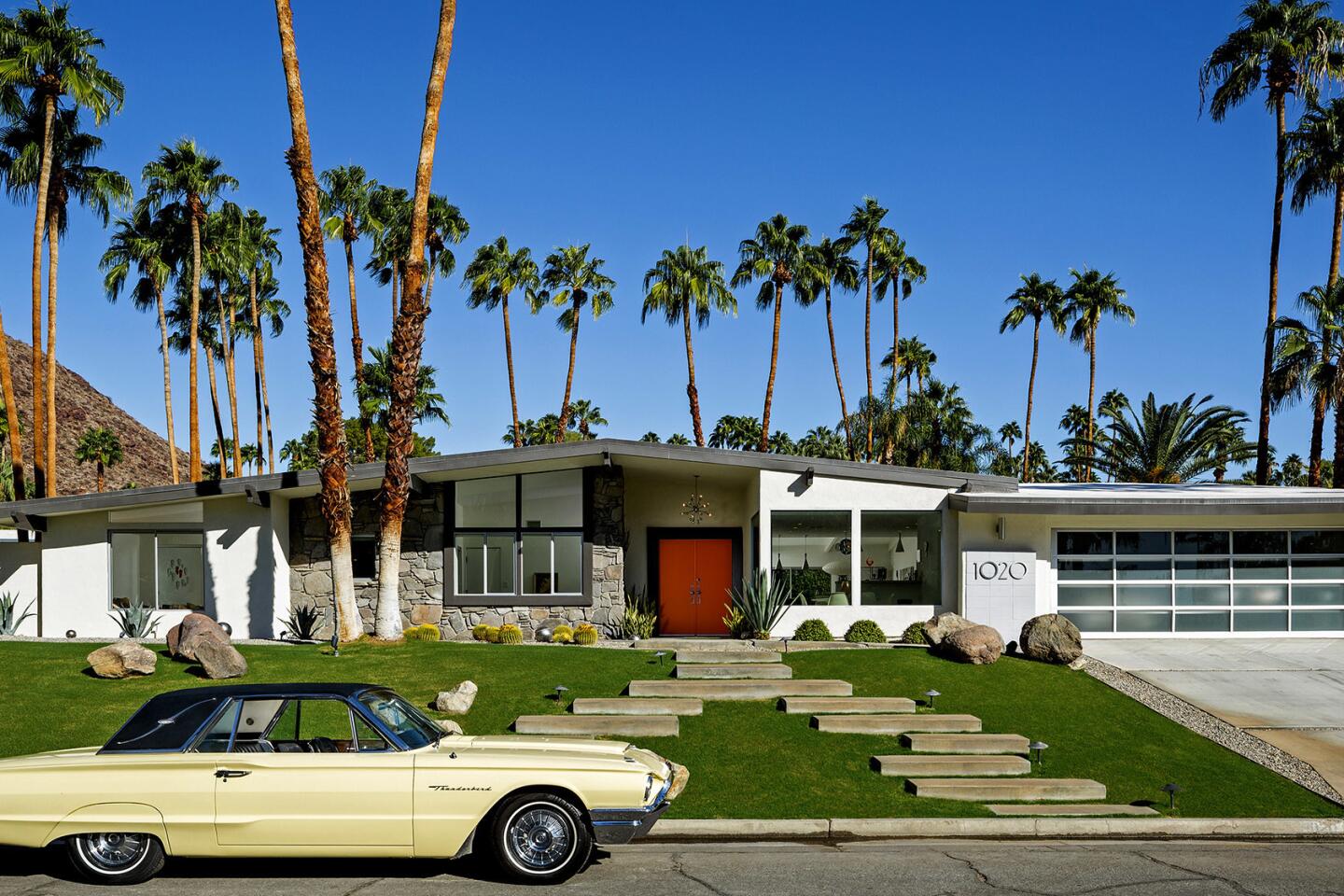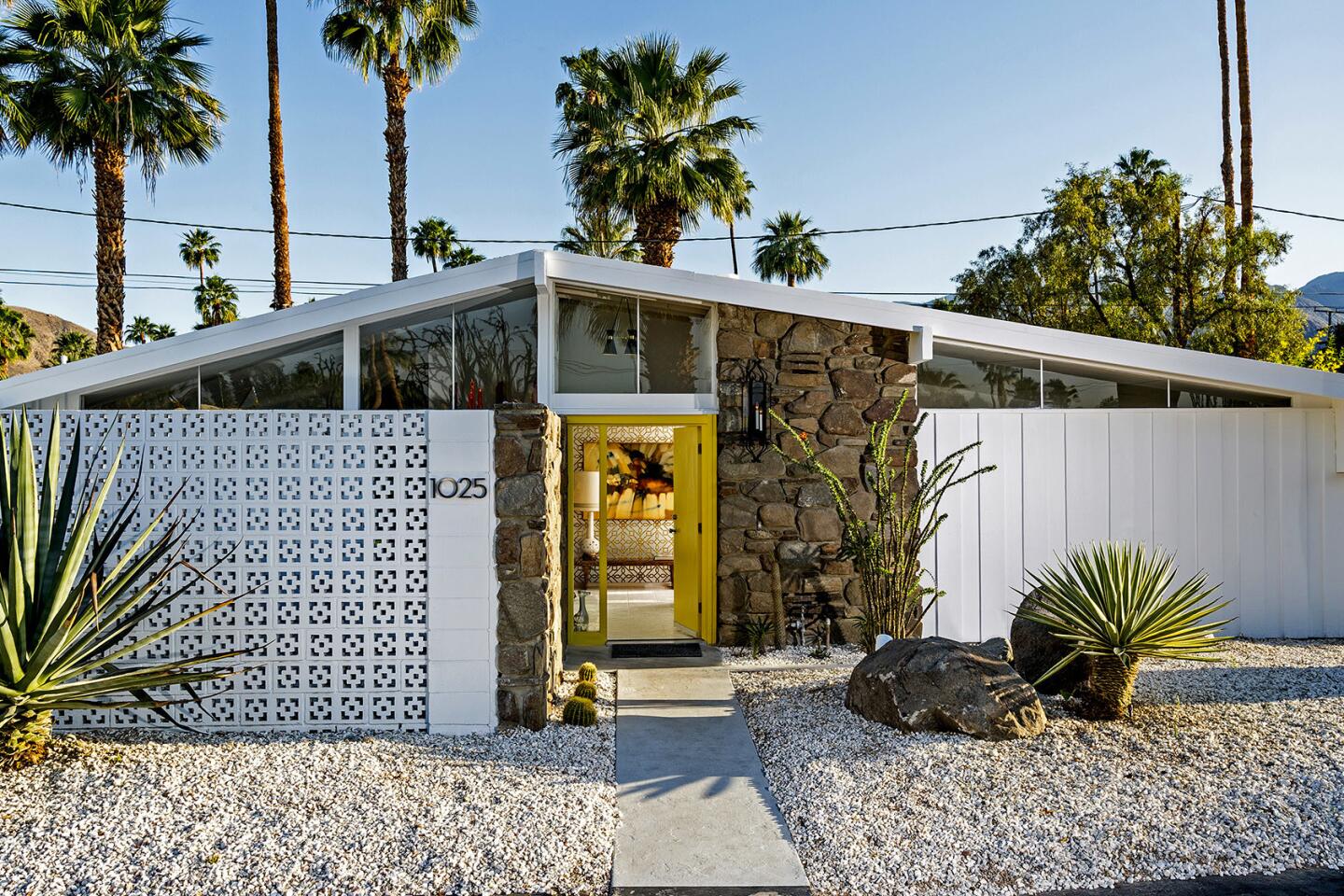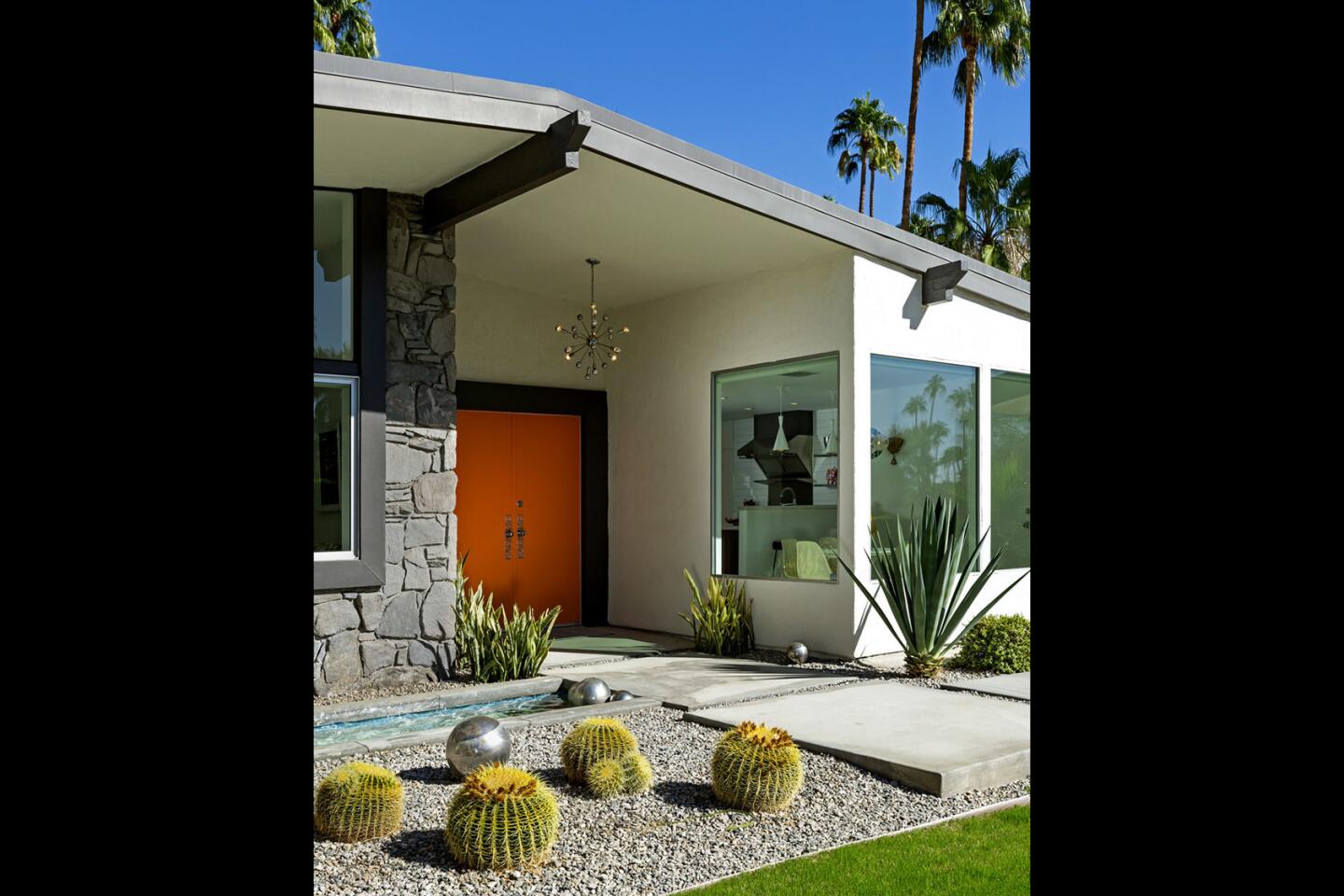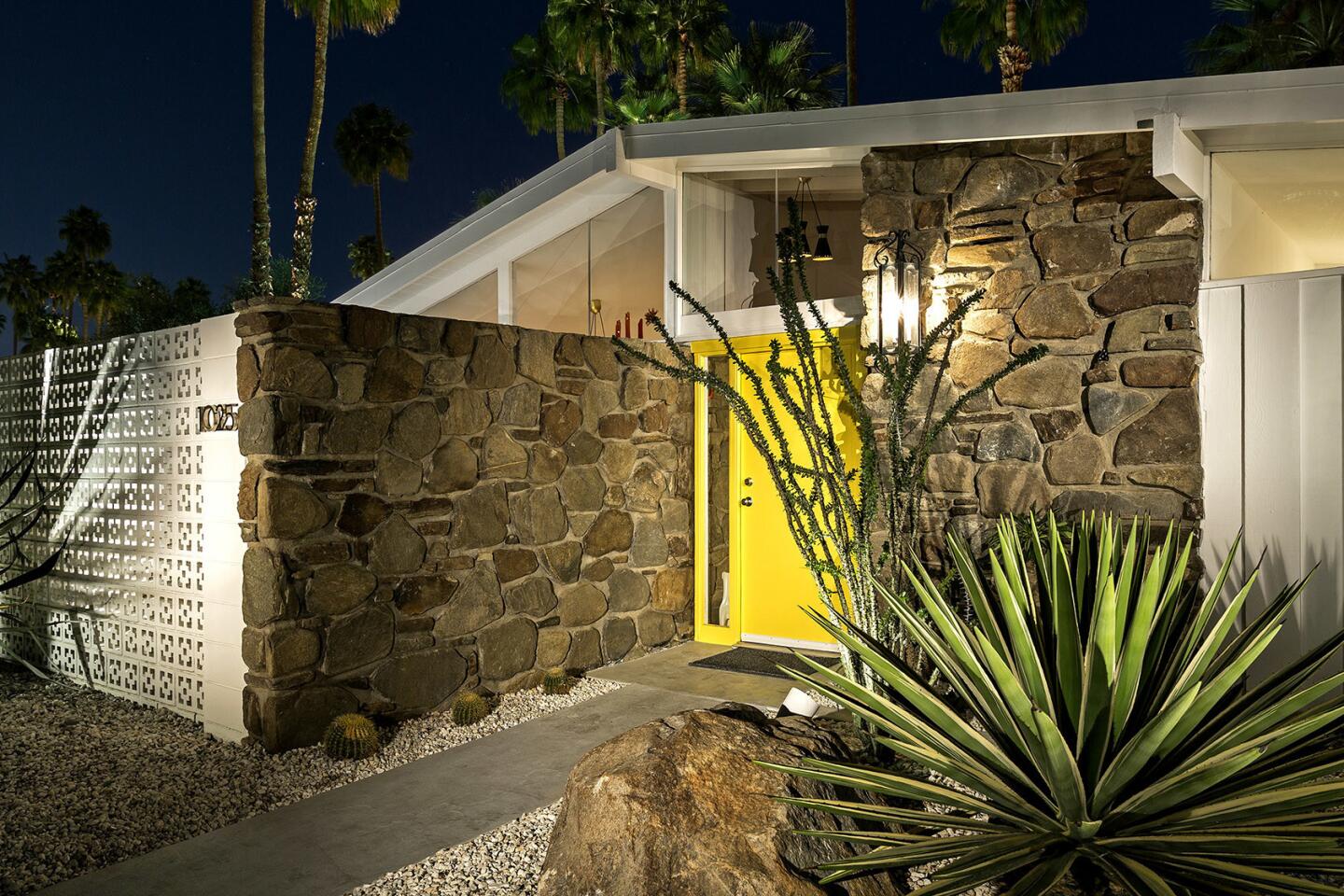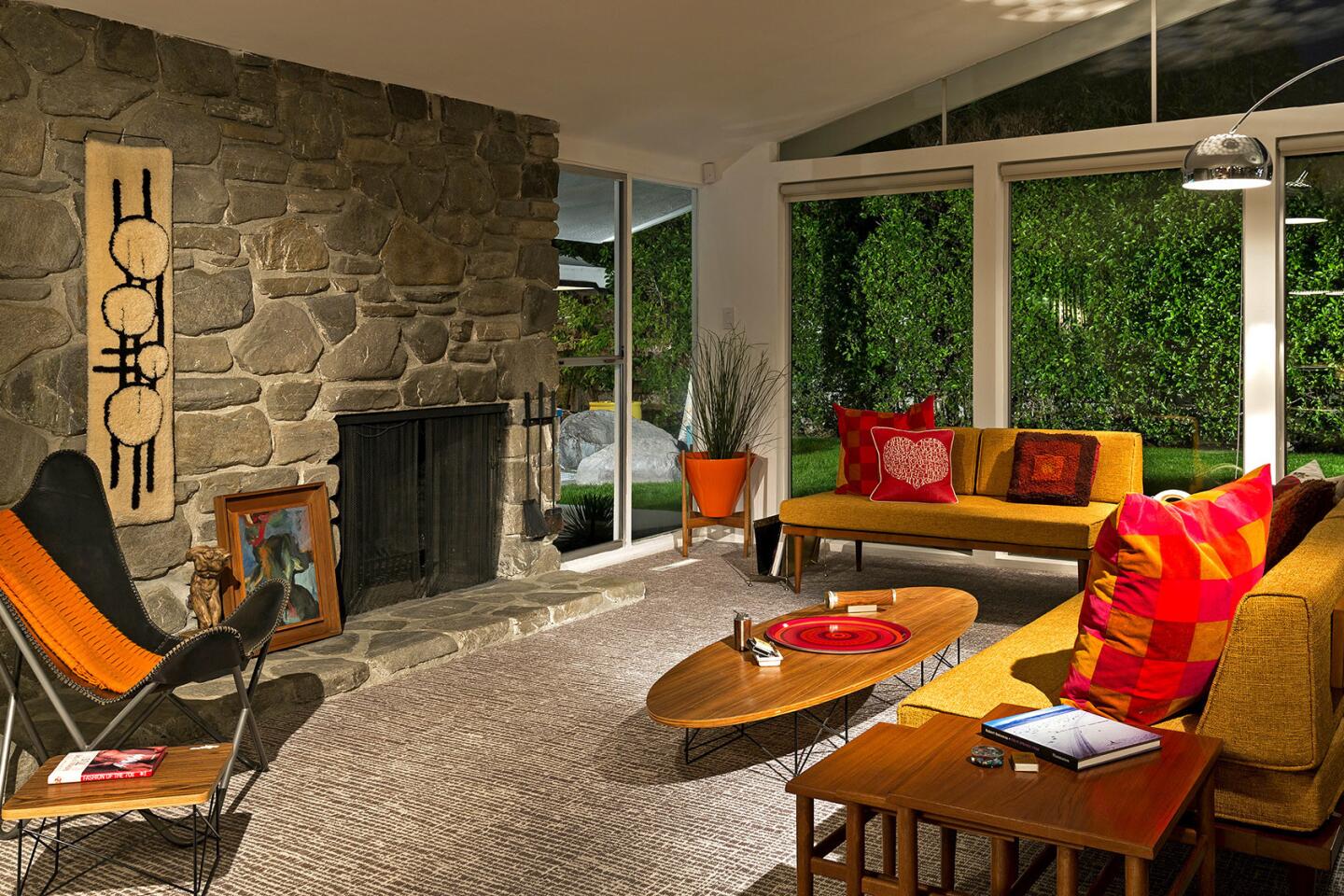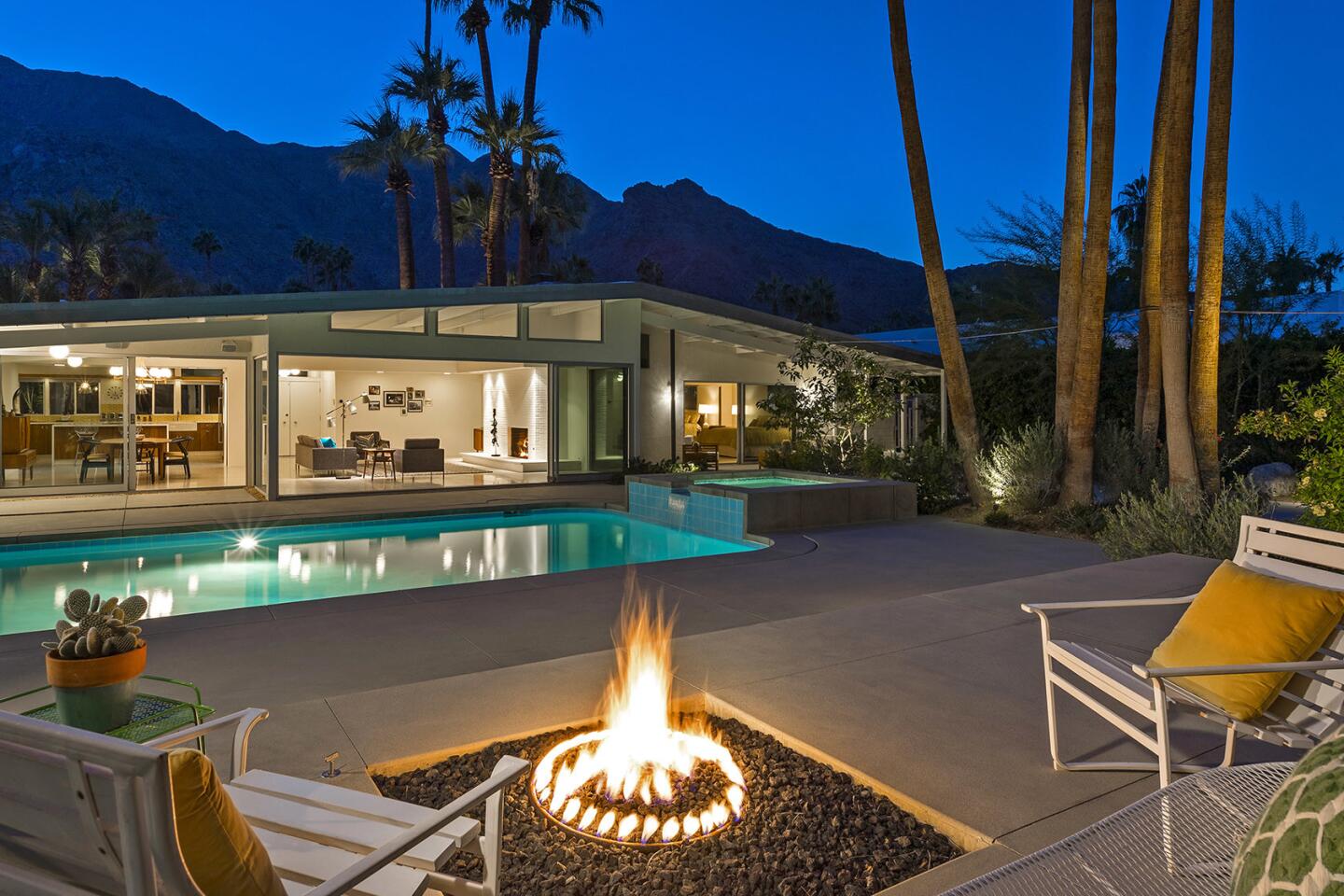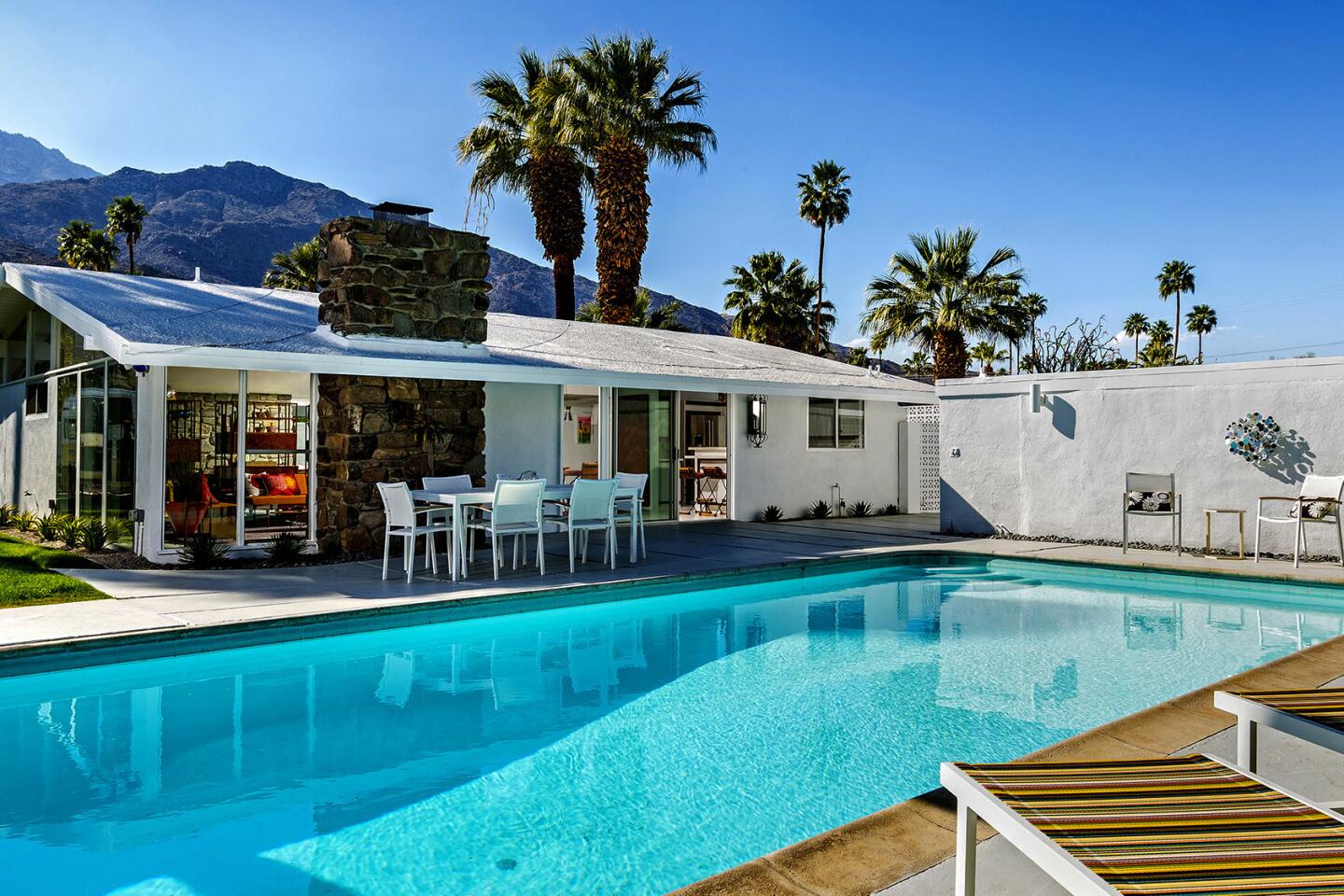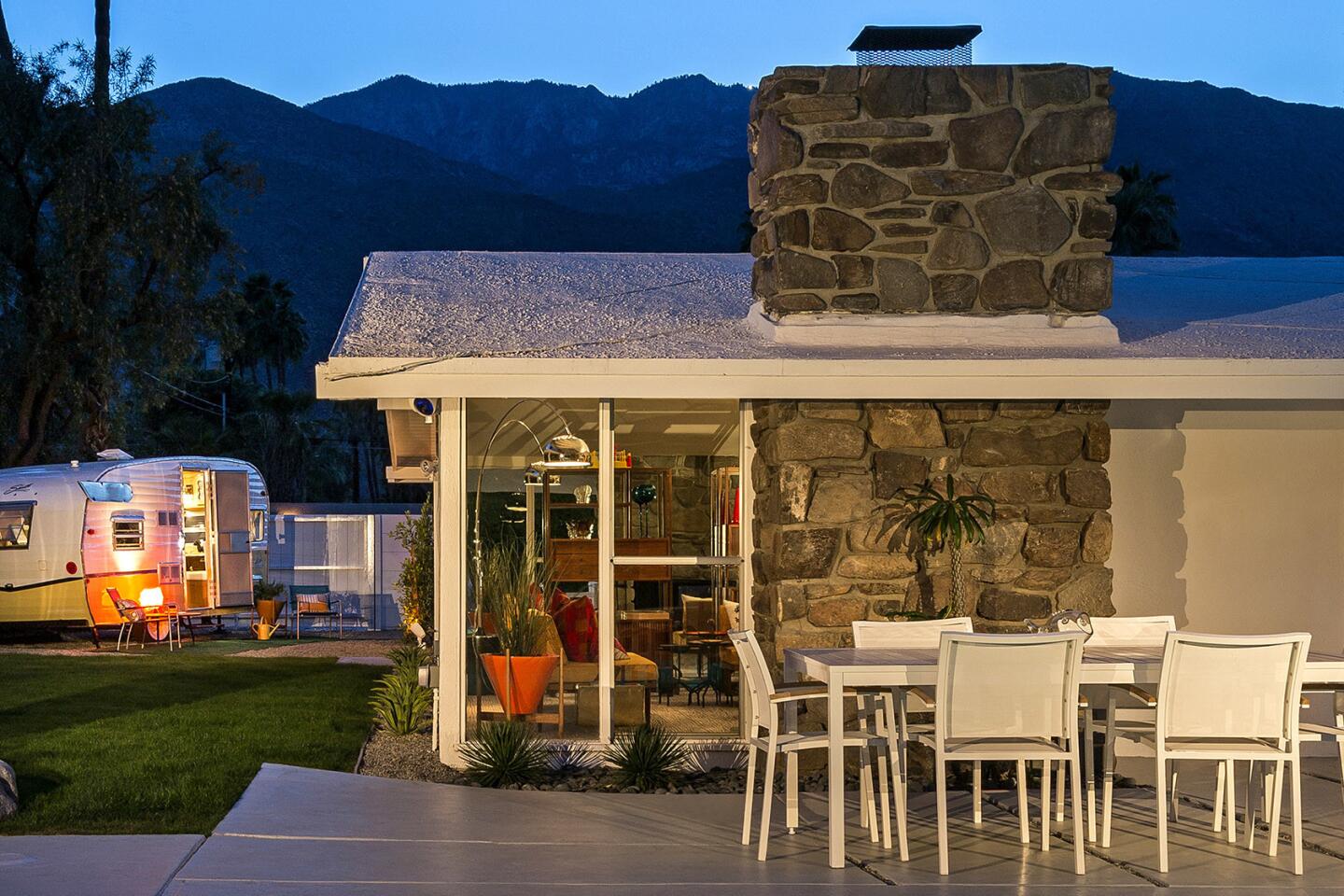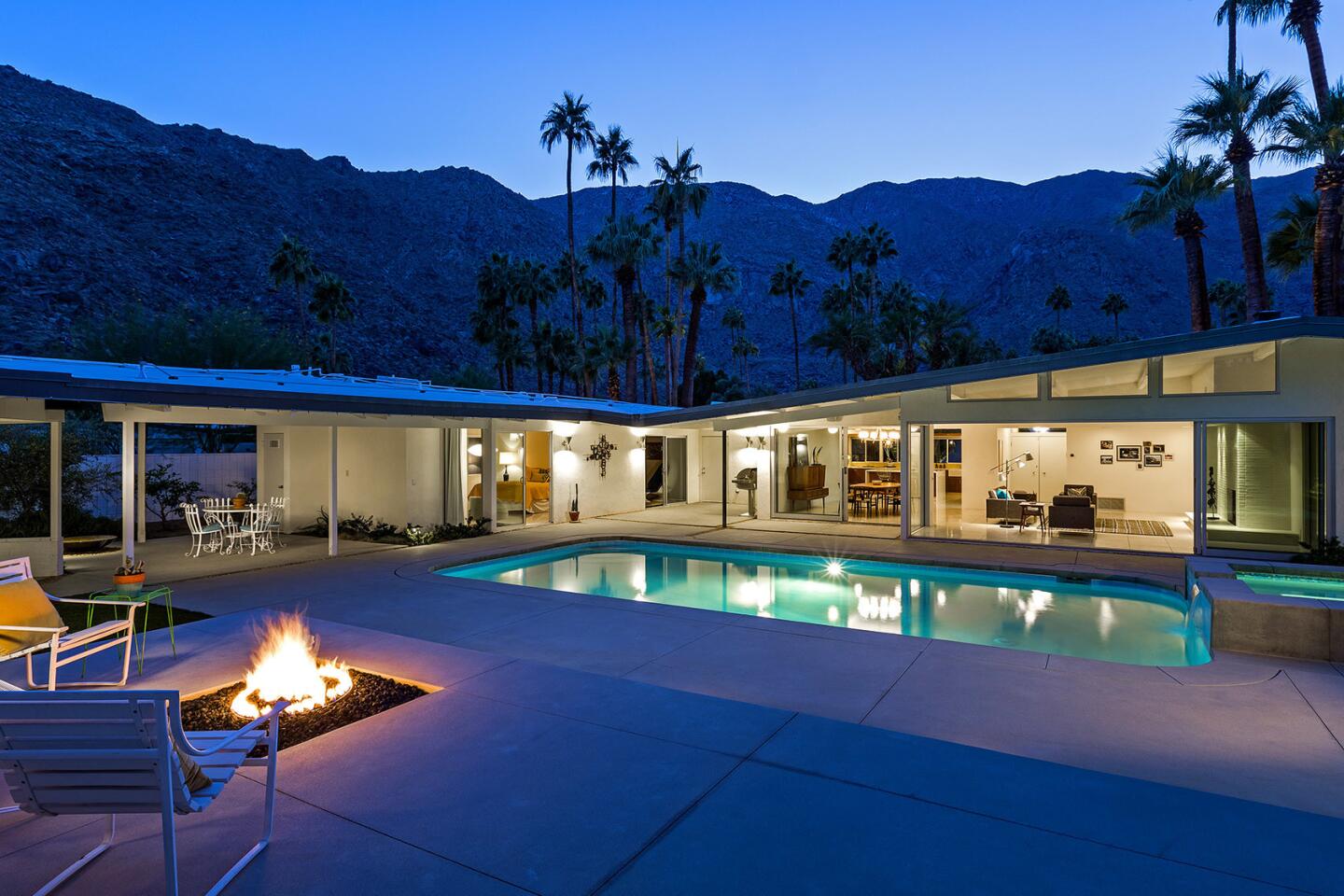Midcentury-modern’s appeal is simple: It fits the SoCal lifestyle
Palm Springs is a haven of midcentury-modern architecture, but that doesn’t mean the city is stuck in a time capsule.
The style — which became popular in the U.S. in the 1940s — still commands a hefty price. And aesthetics are only part of the appeal.
“It fits the California lifestyle,” said Paul Kaplan, director of an eponymous real estate group in Palm Springs. “There’s an endless demand from people who want something different than the Mediterranean tract home they’re used to in Orange County or San Diego.”
Midcentury-modern homes tend to be simple, informal and infused with light. Interior spaces blend with outside nature via wide swaths of glass and a post-and-beam construction technique that eliminates heavy support walls. Hollow cement breeze blocks, wood, steel and raked concrete are popular materials.
The properties typically sell for 25% more than a standard home. Kaplan said it’s common for a three-bedroom midcentury-modern home to cost around $600,000.
In part, that’s because the style requires high-quality finishes, components and appliances as well as extensive use of glass and cooling systems, according to Ralph W. Haverkate of Palm Desert real estate firm and midcentury-modern specialists Haverkate Group.
Homes in neighborhoods with a concentration of such properties have even higher price points. So do homes with a vintage exterior but modern furnishings and amenities inside.
Midcentury-modern homes are generally on larger lots than are newer homes — often, the older properties sit on 10,000 square feet, compared with the 3,000-square-foot homes currently being squeezed onto 7,000-square-foot parcels, Kaplan said.
An extra perk: Midcentury-modern homes often feature massive pools, with plenty of room for laps.
“Newer homes have small pools,” Kaplan said. “They’re almost like large spas.”
Home builders have taken note, though some have found that mimicry has its downside.
Building standards have changed since the midcentury-modern style debuted, so new versions sometimes end up with clunky proportions to accommodate insulation and regulated materials.
But architects such as Lance O’Donnell of O2 Architecture and James Cioffi take cues from the clean lines of the style while incorporating innovative technology, such as rolling shade panels and alternative energy production.
“There are some builders who are more creative in taking on the ideals of midcentury-modern,” Kaplan said. “You can adapt the principles of it — that indoor-outdoor connection.”
The midcentury-modern style emerged in force in postwar suburbs, informed by high demand for low-cost housing and by the popularity of the International and Bauhaus design movements.
In the U.S., titans of the style include architects Ludwig Mies van der Rohe and brothers George and William Keck, all based in Chicago. In California, developer Joseph Eichler championed the style in the clusters of tract housing he built throughout the state.
But of any American city, Palm Springs may be most closely associated with the style. Since the 1940s, the desert region has been amassing one of the most notable collections of midcentury-modern buildings in the world.
Thousands of midcentury-modern homes appeared in the next couple of decades, Haverkate said.
Key projects included the Kaufmann Desert House, which was designed by Richard Neutra in 1946 for businessman Edgar J. Kaufmann Sr. — who also commissioned the Fallingwater house in Pennsylvania by Frank Lloyd Wright.
The Twin Palms neighborhood is full of midcentury-modern architecture, courtesy of the George Alexander Construction Co. The father-son partnership of George and Robert Alexander sought out such young architects as William Krisel to design bold, easy-to-build homes that middle-income families could afford. Customers could choose between a butterfly, A-frame or flat roofline.
Even now, when certain midcentury-modern properties come on the market, Haverkate sees “a flood” of potential buyers — many of them younger and involved in creative industries.
“It may be even more popular now than then, because then they were simply buying what was available, a new style of home,” he said. “There is a growing cadre of ‘Modernistas’ who are upscale and very aware of this market.”
Bob Merlis, a publicist who has represented musicians such as Carlene Carter and ZZ Top, lives in a home built in 1957 with an open floor plan, a huge glass area and rough-hewn stone.
The property, he said, “reflects an era of hope and openness.”
“It still seems modern as compared to most contemporary homes,” he said.
MORE FROM HOT PROPERTY
Mel Gibson sells Sherman Oaks home at a loss
Billionaire David Duffield seeks $39 million for dog-friendly estate in Alamo
Mariners pitcher Hisashi Iwakuma didn’t balk when this Newport Beach home came on the market
Sign up for Essential California
The most important California stories and recommendations in your inbox every morning.
You may occasionally receive promotional content from the Los Angeles Times.
